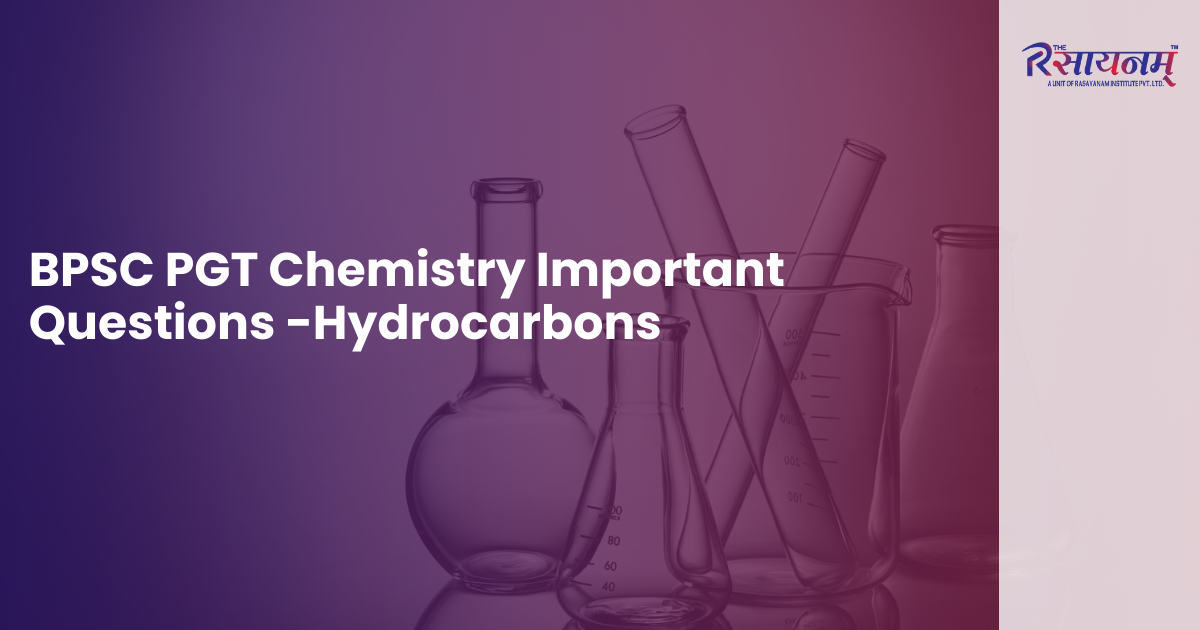
1. Which of the following is true regarding the boiling point?
a) cannot say
b) n-Octane is greater than isooctane
c) n-Octane is less than isooctane
d) n-Octane is equal to isooctane
Answer: b
Explanation: The boiling point of alkanes decreases with branching because it reduces surface area and weakens van der Waals forces. Since boiling point increases with molecular mass and surface area, n-octane has a higher boiling point than isooctane.
2. Methane cannot be prepared by the reduction of alkenes or alkynes.
a) true
b) false
Answer: a
Explanation: Methane cannot be obtained by reducing alkenes or alkynes, since these reactions require compounds with at least two carbon atoms, while methane contains only one. It also cannot be prepared by Kolbe’s electrolysis or the Wurtz reaction.
3. In the combustion reaction of alkanes, if Ethane is used, how many moles of oxygen are required?
a) 3
b) 4
c) 7
d) 3.5
Answer: d
Explanation: The combustion reaction of alkanes has a standard reaction that is CnH2n+2 + (3n/2 + 1/2)O2 → nCO2 + (n + 1)H2O. In the case of combustion of ethane, n = 2. That means the number of moles of oxygen required is 3(2)/2 + 1/2 = 3.5
4. Which of the following is not a process of halogenation of alkanes?
a) acylation
b) chlorination
c) bromination
d) iodination
Answer: a
Explanation: Halogenation of alkanes includes chlorination, bromination, and iodination. The reaction follows a free radical mechanism, where halogen free radicals act as the attacking species, making it a chain reaction.
5. Alkynes are __________ in nature and first four members are __________ gases.
a) polar, white
b) nonpolar, colourless
c) polar, colourless
d) nonpolar, white
Answer: b
Explanation: Alkanes are nonpolar, so they dissolve in nonpolar solvents but are insoluble in polar solvents like water. The first four alkanes are colourless gases, the next thirteen are colourless liquids, and the higher members are colourless solids. This trend is due to the increasing strength of intermolecular forces with molecular size.
6. Corey-House synthesis is used for alkanes having __________ number of carbon atoms.
a) 6
b) 3
c) 2
d) 4
Answer: b
Explanation: The Corey–House synthesis is used to prepare alkanes, particularly those with an odd number of carbon atoms. Since 6, 2, and 4 are even, only the compound containing three carbon atoms can be formed.
7. Which of the following reactions is used to increase the length of the carbon chain?
a) Wolff Kishnn’s reaction
b) Clemmensen reduction
c) Kolbe’s electrolysis
d) Wurtz reaction
Answer: d
Explanation: The Wurtz reaction is used to extend the carbon chain. Kolbe’s electrolysis helps in preparing alkanes with an even number of carbon atoms, while Clemmensen reduction and Wolff–Kishner reduction are employed for the removal of oxygen (as in reducing carbonyl groups).
8. How many carbons are there in the product of a decarboxylation reaction when compared with the reactant?
a) two carbons more
b) one carbon more
c) one carbon less
d) an equal number of carbons
Answer: c
Explanation: The decarboxylation of sodium or potassium salts of fatty acids is a decarboxylation reaction. It is used for descending the series, since the alkane formed contains one carbon less than the parent acid. Quicklime is added because it is more hygroscopic than sodium hydroxide and helps keep it dry.
9. Is of hydrogenation is __________ on steric crowding.
a) may be related to
b) dependent
c) independent
d) not related to
Answer: b
Explanation: The ease of hydrogenation depends on steric hindrance around the multiple bond — greater crowding reduces reactivity. This principle is applied in preparing alkanes by hydrogenating alkenes and alkynes.
10. Alkanes are also known as __________
a) alkenes
b) paraffin
c) aromatic
d) alicyclic
Answer: b
Explanation: Alkanes are saturated open-chain hydrocarbons containing only carbon–carbon single bonds. Being chemically inert under normal conditions, they do not react with acids, bases, or most reagents. They were earlier called paraffins (from Latin parum = little and affinis = affinity), meaning “little affinity.”
Related Question Bank to Read:
BPSC PGT Chemistry: p-Block Elements Important Questions
BPSC PGT Chemistry Important Question: Uses of Boron and Aluminium and their Compounds
BPSC PGT Chemistry: Trends and Anomalous Properties of Boron Important Questions
BPSC PGT Chemistry: p-Block Elements Important Questions
Silicon & P-Block Elements: Understanding Their Properties and Applications
Boric Acid & P-Block Element: Understanding Their Properties and Applications
BPSC PGT Chemistry: Important Compounds of Boron

Download The Rasayanam App

Also, download our brochure for more details on the program and contact us with any queries.
Conclusion
If you’re preparing for BPSC PGT Chemistry, then The Rasayanam provides structured courses, expert mentorship, and top-quality study resources to help you excel.


